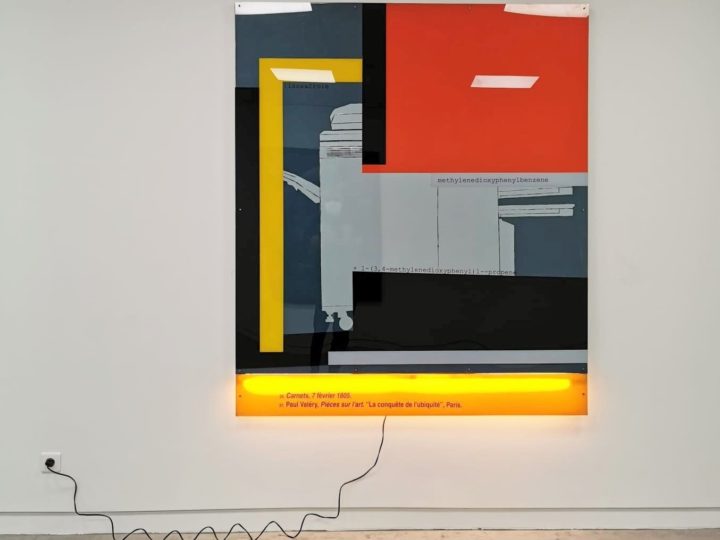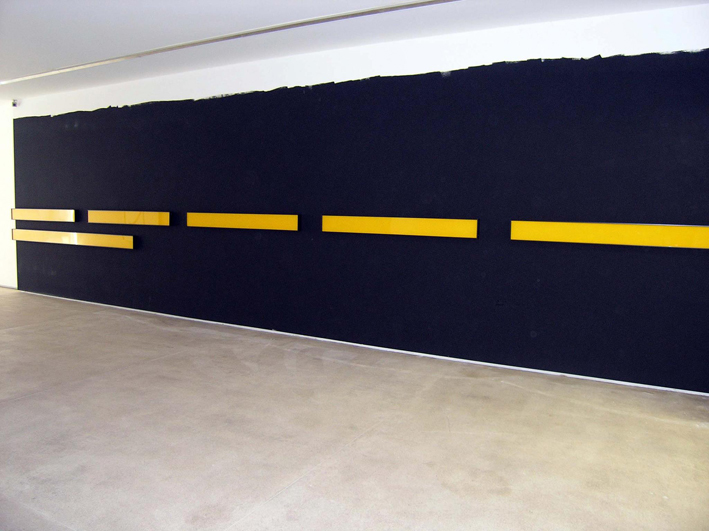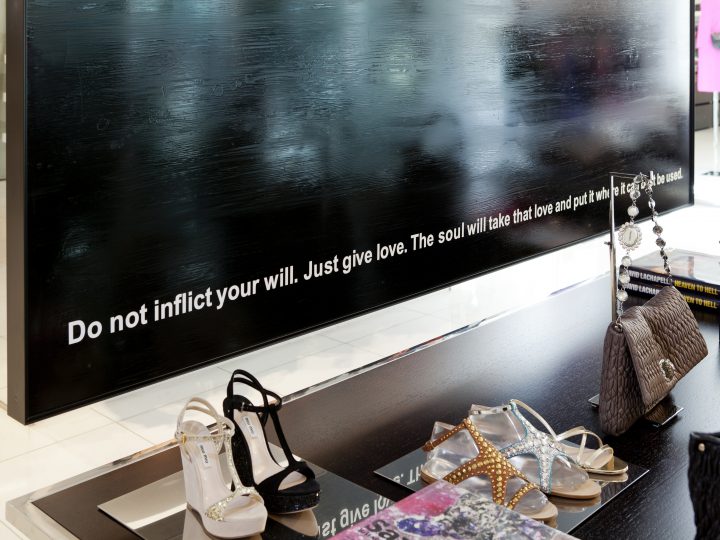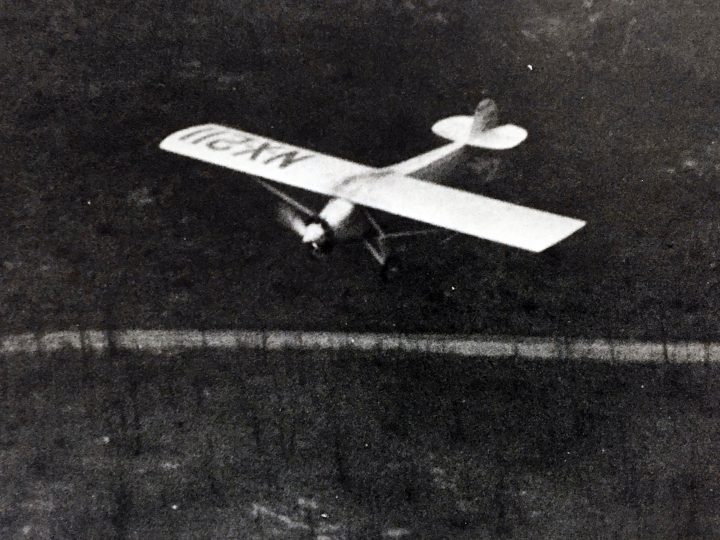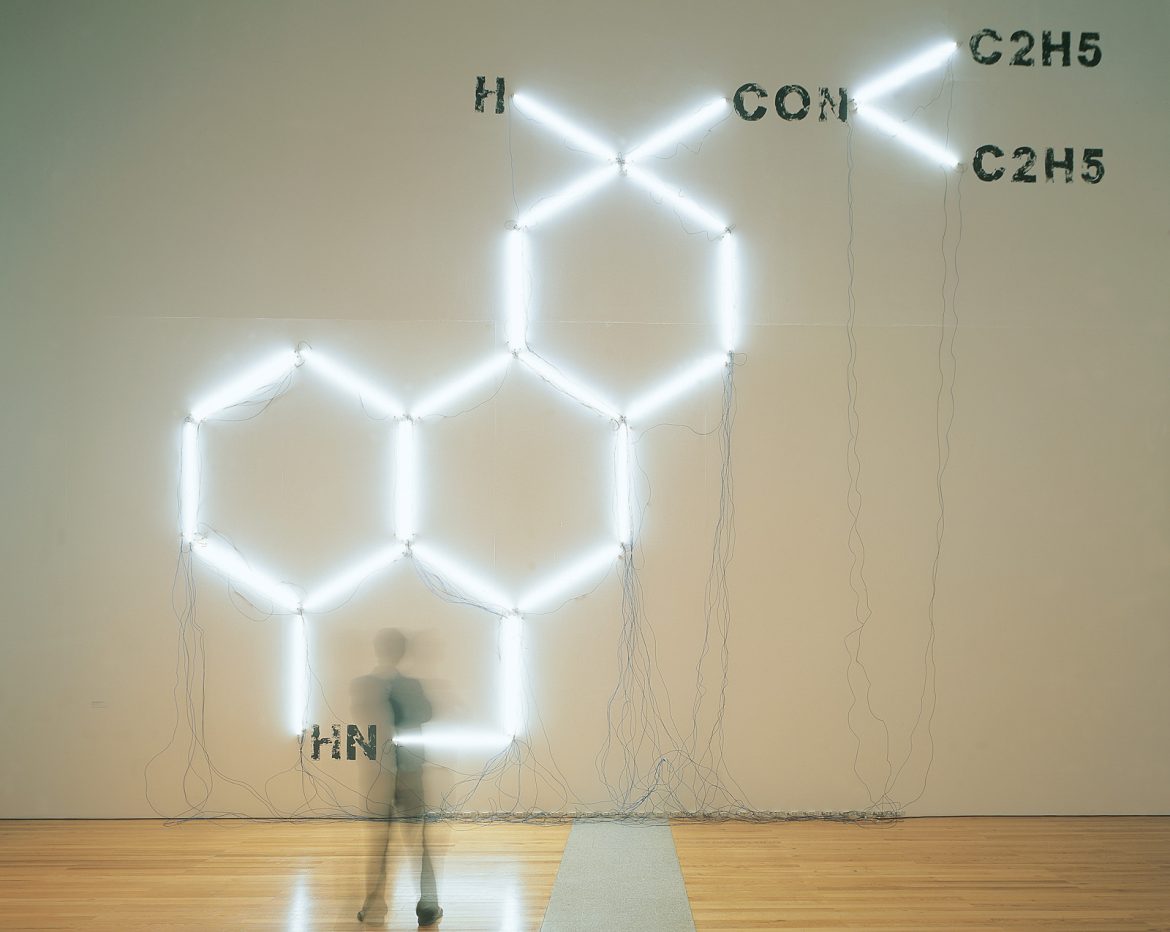
When the Blind Runner exhibition was first being prepared, there was a ghost that came and installed itself in the midst of all our meetings: the memory of Blade Runner, the film by Ridley Scott, which, based on the novel by Philip K. Dick, helped to construct the imaginative world of João Louro’s generation. In fact, the profusion of images that nowadays become confusedly mixed together in the cities, the widespread nature of the digital image and the elimination through saturation of the value that is intrinsic to the image itself represent the backdrop against which João Louro’s work has been defined, as if it were possible to flee from the universe of visual intoxication through a use of the word that might redeem the image. Of course, such redemption is always an ironic exercise, and sometimes a bitterly cynical one, because the word is, always and inevitably, an image. But João Louro’s work has succeeded in establishing itself in this transitional space, between the derisiveness of the image and the weightiness of the word, or between the exhaustion of language and its recovery as form.
In this way, the exhibition gradually defined itself in keeping with this line of thought, delving into Louro’s poetic universe, in which Baudelaire is crossed with Ken Kesey, Beckett with Louis Althusser, Nabokov with Blanchot, and Conrad with the ghost of Arthur Cravan. The exhibition’s time span was that of João Louro’s recent work, with two sporadic archaeological incursions.
The catalogue benefited from the valuable contribution of Paulo Herkenhoff (whose commitment and acute intelligence I am most grateful for), who, in a brilliantly written text, defines Louro’s work as a route (quoting Oswald de Andrade), inhabited by paradoxically realistic signposts – Wittgenstein is as far away as Benjamin – that lead the viewer to an enigma.
The exhibition passes through the intense traffic of short circuits, the flows that the work suggests to the viewer, through its electric tension.
All that remains for me to do now is to thank the artist for his willingness to discuss and question his own work, all those who loaned the works that made the exhibition possible, especially the Galeria Cristina Guerra, Clara Ferreira Alves and Manuel Reis.
In the last decades interest in hunger artists has declined considerably. Whereas in earlier days there was good money to be earned putting on major productions of this sort under
one’s own management, nowadays that is totally impossible. Those were different times.
— Franz Kafka, A Hunger Artist
I
Loo. Lee. Ta
João Louro’s Blind Images are paintings hidden behind an acrylic curtain that affords them a certain coldness and distance in relation to the spectator. With varying dimensions, they are frequently monochromatic or bichromatic paintings, placed inside a black frame. Beneath the fields of uniform colour are captions taken from publications, magazines or newspapers, describing a situation that frequently involves well-known figures from the artistic jet set, whilst on other occasions it is the very situations described in the text that meet with the spectator’s recognition. The situations described in the caption, which, just as in the media, decodes the image, are frequently important situations in the history of art, or they may be moments in a film, or even mere social occasions. The unifying factor is the element of recognition that is offered to the spectator: a name, a date, a place, a character.
Let us look at this another way: the situation is paradoxical, insofar as the spectator is standing in front of a canvas, although this characteristic is to some extent hidden by the glossy layer of acrylic that erases the painting’s pictorial nature, even though none of the characters, places or situations described in the caption are to be found on the canvas.
On the other hand, this painting is transformed into an image. In other words, having been stripped of its specific quality as a painting – everything that gives a painting its ambition within a particular aesthetic field, such as the thickness of the colour, the expressiveness of the brushstroke, or, to put it another way, the intrinsic quality of the representation – it seems to propose a system of references as an image, in other words as a system of representation whose raison d’être derives from the certainty of its contextuality. Now, in Louro’s Blind Images, no explicit formulation is given about the indication that is provided in the caption. That is to say, if the caption indicates that it is Barnett Newman, another leading painter or socialite from the 1970s, each of these descriptions constructs an image in our imagination. Of course, this image finds no correspondence in the monochromatism, or bichromy, of the panel placed above the caption. On the contrary: if the monochromatic image of the painting has any specific characteristic, it is its mirrored character, which reflects back to the spectator a picture of himself and the room, or everything that is front of him.
It is therefore a process of deception and contrast: deception in view of the expected universe of an image that exists, or should exist, in order to illustrate a text (as, for example, the series of still(s) from a film, which include direct references to specific films, with transcriptions of segments of dialogues); contrast between the universe of the representation, in its extreme version of an illustration – etymologically, meaning to produce light – and the hypothetical obnubilation of the image that is (is it really?) behind the varnished layer that covers the canvas, which in turn is covered by glass.
This series of works has been gradually acquiring a very prominent place in João Louro’s work, both at the level of the construction of a universe of (paradoxically) images and as a device that programmatically situates his artistic path of development in the field of paradox, contradiction and deception.
In fact, one of the questions that may rather naively be posed when confronted with these paintings (let us give them this name and postpone for a while any examination of the term’s exactness) lies in the doubt of our knowing if, behind the chromatic field that covers them, there actually exists the image that is described in the caption. This question which, while remaining unanswered, might hypothetically be addressed to the central core of the artist’s personal trajectory – should this indicate a conceptual approach, or one based on process – begins to acquire a fundamental importance. What is curious is understanding that such importance does not derive from its recondite truth, but arises because asking it is symptomatic of the fact that, for the spectator, there is (beyond irony, and distance) an intrinsic need to find a truth, even if it is the hypothetical and provisional truth of interpretation, or the Pyrrhonic truth of a “context”, that is to say, of a reality.
João Louro’s painting has therefore devoted itself to this task of proposing, in terms of its modus operandi, an insoluble situation for the spectator: on the one hand, it is about a text, its caption; this text should describe the image, or, in other words, it should allow us to know who those figures, or those characters, are, whether they are from the universe of fiction or the universe of history. But the fact remains that the painting does not present any characters, any figures or situations. Or rather, it presents the figure of the spectator himself, reflected in the mirror produced by the layer of glass over the layer of colour, as well as the room where the painting is housed.
About its subject-matter, nothing is said. So, the detail of knowing if there is any truth in the picture’s caption takes on a substantial importance. If, in fact, there does exist an image behind the layer of paint, behind the glass, then there is a truth in the painting, a belief in the possibility of the painting being about representation, in other words about verisimilitude, i.e. about moral truth. There is a truth in painting.
If, on the contrary, there is nothing within the confines of that painting, if, under the layer and the reflection, there is nothing but the canvas, blind and acritical, then this painting is manifestly cynical. But the artist does not tell us if the image that might provide it with its raison d’être does or does not exist. That is, if it exists as an image on a palimpsest, because the image does in fact exist within the confines of our memories, or on the horizon of our expectations, or in the history – in the small, brief history – of the painting’s actual production.
In one of the paintings that comprise the extended group of works incorporating this collection, there is one (actually, more than one) bearing a caption taken from Lolita, by Vladimir Nabokov. It is, however, called “film still”, which leads us to think of an image from Stanley Kubrick’s film. Which image? Inevitably that of Humbert Humbert painting Lolita’s toenails, the supreme image of the indecipherable combination between Pygmalion, the satyr, and, as we shall later discover, the justifiably jealous man. Who is deceiving whom, in the story that is unfurling before us? The young Lolita, her lover, a man without any fear of ridicule, or the extraordinary character portrayed by Peter Sellers (who is not to be found in the book), the artist who gives us a quotation, or we ourselves who build a web of inferences and deductions, always compulsively searching for a deeper layer, one that is more hidden and covered with meaning? Deep down, in Lolita’s toenails, the truth exists. Lo. Lee. Ta.
II
Two Edifying Stories
[João Louro’s Blind Images summon up two episodes from recent art history that are, however, located in different reference situations, insofar as one of them lies precisely at the origin of this group of works and the other, although it is not there, is on the fringes thereof and perhaps helps us to better understand Louro’s creative process.
At the centre of both stories is Robert Rauschenberg.
According to Edward Strickland, Rauschenberg produced a series of white paintings when he was a student at Black Mountain College in 1951. These paintings were made, in the words of the artist himself, as a reaction to the teaching of Joseph Albers, whose student he was for a semester (which he started late, because he had been in Paris), in a relationship that was painful and, according to Rauschenberg, almost humiliating. Rauschenberg’s white paintings had three versions, given that they were produced three times, the first of these being in 1951, then in 1962, and finally in 1968. The history of these paintings expresses the main strands of influence that were to develop in this respect.
Created in October 1951, they were the result of the conflict between Rauschenberg and Albers. They amount to a series of square paintings in enamel, applied to the canvas with a roller, without any identifying mark, stylistic or otherwise, of their author’s handiwork. According to the painter’s own report, these canvases corresponded to a reaction to Albers’ theory of chromatic interactivity, for the latter was preparing at that time the large series under the general title of Homage to the Square.
According to Edward Strickland, the first version of these paintings resulted from a purist approach on the part of Rauschenberg himself. In the letter that the latter wrote to Betty Parsons (the gallery owner who had organised the Barnett Newman exhibition the previous year and one of the central figures in the appearance of the New York School), Rauschenberg compared the white paintings to God, in a metaphor of great metaphysical ambition, in an enthusiastic language that undeniably showed his age of 26:
“They are large white (one white as God) canvases organized and selected with the experience of time and presented with the innocence of a virgin. Dealing with the suspense, excitement, and body of an organic silence, the restriction and freedom of absence, the plastic fullness of nothing, the point a circle begins and ends. They are a natural response to the current pressures and the faithless and a promoter of institutional optimism. It is completely irrelevant that I am making them. Today is their creator.” The letter’s final sentence is significant: “Today is their creator,” a phrase that is almost emblematic of the idea of the suppression of authorship and the relationship between art and life that was to be so important in its influence on John Cage.
However, over time, Rauschenberg’s own idea about the hypothetical mystical nature of the paintings was to change. Later, quoted by the biographer Calvin Tomkins, the artist speaks of the canvases as “hypersensitive” (“I always thought of the white paintings as being, not passive, but very – well, hypersensitive… so that one could look at them and almost see how many people were in the room by the shadow cast, or what time of the day it was”), which does, in fact, mean interactive, in the sense in which they act as reflectors (because of the actual technique of painting with enamel, which is by nature a reflector).
The subsequent history of the white paintings places them as an unavoidable point of reference for any approach to the reduction of manufacture and its later importance in the development of the work of a whole set of artists who took this deliberate reduction of the “artistic” nature of the process as an essential component of artistic creation. For let us see: as soon as the paintings were completed, their main defender was to be John Cage, who spoke of them as “…airports for the light, shadow and particles”, in other words, as fields of possibilities, far removed from any expressive virtuosity. In these works, one can note an absolute detachment in relation to their execution, which was very important during the first phase of minimalism.
John Cage saw these pieces in the summer after they were produced (i.e. 1952) and, in his calling them “airports for the light, shadow and particles”, there is a clear allusion to the correspondence that he found between this specific work of Rauschenberg’s and his own research, which, under the influence of Zen, had been directed towards a study on openness, impermanence and possibility.
Cage, who was based at that time at Black Mountain College, was preparing the event there that served as the basis for the whole idea of “happening”, the Untitled Event of 1952, in which he enjoyed the collaboration, amongst others, of the pianist David Tudor and the dancer Merce Cunningham.
At Woodstock (on 19 August 1952), Cage presented the piece which is a double of Rauschenberg’s white paintings. This is a musical piece entitled 4’33’’ in three movements (I Tacet, II Tacet, III Tacet). The pianist James Tudor simulates on three occasions that he is about to begin a piece on the piano, which he never actually starts. Rauschenberg’s white paintings were set up on the stage, framing the piano on which Tudor played his score of silence.
In the words of Robert Rauschenberg, the white paintings had to do with emptiness or, in Cage’s opinion, they functioned as readymades, in the same sense in which his own composition was also this – a sonic readymade – inasmuch as the effective sound content of the musical work began to consist of the parasitic ambient sounds, such as the noise produced by the audience, their hissing or the surrounding noise.
The ironic fate of Rauschenberg’s paintings did not overlook this Duchampian legacy, for a significant role was reserved for them, at least in symbolic terms. In 1962, the paintings were requested by Pontus Hutken, who intended to show them at an exhibition that he was organising in Stockholm. Apparently, the works disappeared, so Rauschenberg decided to write a letter to the critic, giving him precise instructions as to how the paintings should be made, what the dimensions were, the type of canvas to be used, as well as the type of paint. The paintings were made by an anonymous artist in Stockholm and were presented at the exhibition as “Rauschenberg’s white paintings”.
In 1968, the paintings were requisitioned for another exhibition, organised by Ivan Karp. Once again, the canvases disappeared, but this time they were repainted by Rauschenberg’s assistant at the time, the young painter Brice Marden, who was to become one of the most important exponents of monochromatic painting during the subsequent decade.
The second story, which is invoked by João Louro himself as one of the origins of the Blind Images, is the story of the drawing by De Kooning that was erased by Rauschenberg. Erased De Kooning is an ironic palimpsest on the refusal to create, or, better, on the way in which an act of destruction can, by itself, constitute a second moment of the work, its final version or even its construction as such. Of course, the notion of authorship is brought into question in this process of intervention and the destruction of the work of one artist by another, who, in this way, generates his own work. On the other hand, it should be said that the spectre-like image of the drawing that survives and establishes itself as the work only acquires meaning through the fact that its title is a caption – in a tradition that is similarly Duchampian – which explicitly states the process that leads a work of art to its annihilation, this process representing the Pyrrhonic glory of its reconstitution as a work.
Like Kafka’s hunger artist, its greatness derives from its annihilation.]
III
Paint It Black
It is from this insoluble contradiction that Louro’s Blind images come into being. However, in the ashes of the disbelief in the redeeming condition of the image, in the mistrust of its validity, a vanitas is contained. The brilliant, slick character of his works confers upon them a varnished aura, on the threshold of the tolerable. As if the halo of a neon light in Las Vegas were passing through them and giving them a blessing: beyond taste, beyond belief, beyond the intrinsic and worthy reason for their being, the shine of these paintings justifies them.
In this rockabilly pride – already of the second or third degree – there is a game of trust played with the spectator. Without hesitation, Louro proposes to us a pact based on two levels of reasons, which are also contradictory: on the one hand, there is the possibility of finding, in the flow of names and situations described in the captions, a system of references that might provide a reason; on the other hand, he proposes that we allow ourselves to be seduced by the varnished charm of the surface of these paintings. Whilst there is a clear ambivalence in relation to the first proposal, with this always being greater than its formulation (if we find a link, does this link not derive more from our need to establish a pattern that can afford us a global view of the world and provide us with the reason for a monochromatic passion than from a system, however fluid and open the one that the artist is proposing to us may be?), in the second case, what is proposed is a complex game.
How can we, beyond any other reason, allow ourselves to be seduced, time and again, by paintings that purport to be outside the tradition of taste and, simultaneously, let ourselves succumb to the temptation of looking at their form? How can we tolerate the narcissistic intrusion imposed by their mirrored character? How can we allow ourselves to produce a discourse on the quality of the surface, if we know that the whole discursive battery summoned up by these works derives from a tradition of erasure, derision and, in the final analysis,a contextual tradition?
If there is in fact a tradition into which Louro’s work can be inserted, or within which it is legitimised, it is the contextual tradition, in the sense in which it is based on the principle that the work of art always operates in conjunction with a reality (with a context) into which is plunged the capacity for intervention, commentary or even the possibility of existence. Let us say that the work’s internal features are accidents in that enormous map of references and connections that is plotted by the work. In other words, it is within art in the broad sense that Louro produces his pieces, even if they are paintings, as is the case with his Blind Images. However – and this is the most intriguing and disarming fact about his work – it is from within that reference system (the Duchampian tradition, contextualist criticism, political intervention) that the artist allows the development of a system of belief in the intrinsic quality of each work for its own sake, centred around the attention paid to the chromatic quality of each painting, each surface. Left in suspension is the notion of art in the broad sense, kept on each occasion in inverted commas in order to define a specific skill and require a specific form of attention. The idea of a work of art in the broad sense has its weakness, as Louro very clearly understands, in the poverty of a generic idea of art, when this is always directed towards a specific circumstance, through processes that derive from specific skills, until a result is achieved whose importance derives from its specificity, more popularly referred to as its idiosyncrasy, of what that image is and why it may not, for this reason, be confused with any other one.
The proposal made by the Blind Images is therefore highly ambitious, always derivative, but, for that very reason, condemned to failure – and the artist is fully aware of this. It is not a question of recovering, nor of redimensioning, nor even of criticising the painting, but a question of finding, at each moment and beyond any prophecy, a survival (nachleben) of the image, a strength of resistance that is situated in the field of our belief.
It is from here, from this map of our memory, that its possibility is engendered as a policy, recondite and hidden in the reflecting depths of a black monochrome.
